|

On eBay Now...
National Air & Space Museum Lot Curtiss NC-4 Douglas Aircraft Fabric Framed For Sale
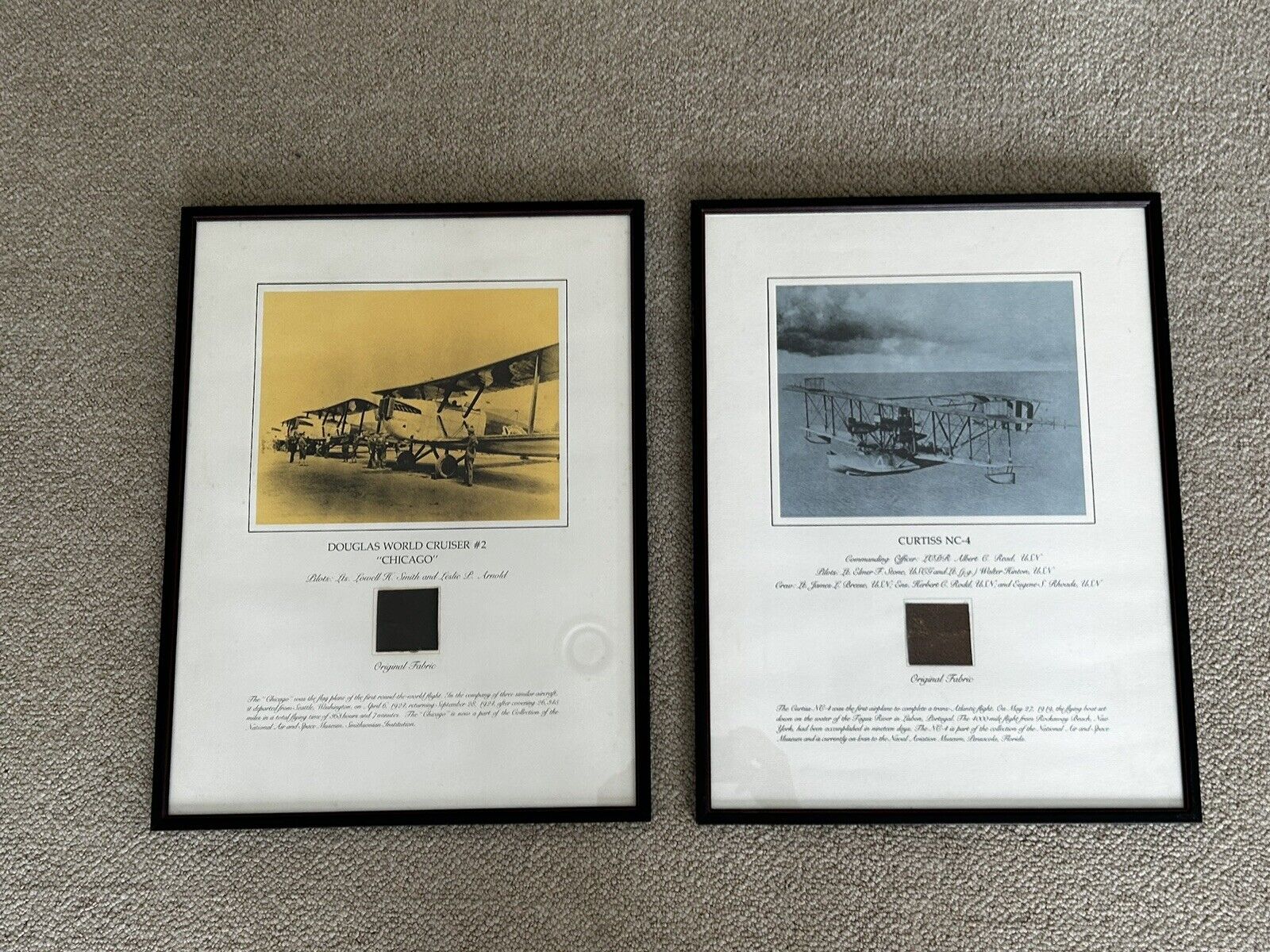
When you click on links to various merchants on this site and make a purchase, this can result in this site earning a commission. Affiliate programs and affiliations include, but are not limited to, the eBay Partner Network.

National Air & Space Museum Lot Curtiss NC-4 Douglas Aircraft Fabric Framed:
$399.99
National Air & Space Museum Lot of two framed original aircraft relics!
Identical frames measure 20-3/4” x 15-3/4”.
Each includes an original piece of fabric from the plane noted.
1. Curtiss NC-4 who is the first plane to complete a trans Atlantic flight. Commanding Officer, Albert Read, USN.
2. Douglas World Cruiser #2 “Chicago” was the first flag plane of the first round the world flight.
Overall very good condition
Includes some details from the flights from the Smithsonian institution, who originally sold these original pieces of aircraft memorabilia. Here’s the text from those letters:
FIRST TRANS-ATLANTIC FLIGHT On May 27, 1919, the Curtiss NC-4 flying boat landed on the Tagus River in Lisbon, Portugal, becoming the first aircraft to complete a trans-Atlantic flight. 500-mile journey from Rockaway Beach, N.Y., had been accomplished in nineteen days. Four 4-engined flying boats had been designed and built in 1918 for submarine patrol in the Atlantic. World War I ended before they were put into service, however, and the Navy began try the four aircraft on a trans-Atlantic flight. In January 1919, the Secretary of the Navy gave permission for the flight. The course decided upon was Rockaway Beach to Trepassey Bay, Newfoundland, then to the Azores; and on to Lisbon. U.S. Navy destroyers would be deployed at 50-mile intervals along the route to give assistance. Pre-flight preparations were plagued with bad kuck Loose a March storm the NC-1 was driven ashore after breaking from her moorings. One of the lower left wings was destroyed and the upper left wing was badly damaged. There were no spare wings and no time to build new ones, and so the NC-2 was sacrificed to provide the needed parts. On the night of May 5, gasoline being pumped into the supply tanks was ignited by a spark from the pump. The NC-1 lost both its right wings and the NC-4 its tail section. Again, the necessary items for repairs were obtained from the NC-2. Trial flights were made, and the new parts proved satisfactory. NC-3, and NC-4 left Rockaway Beach at 10:00 a.m. at Hay. ax Harbor, Nova scotia, 'The NC-1' and NC-3, after an uneventful flight, landed the It was not until the next morning that word was received that due to engine trouble, the NC-4 had been forced to land at the Chatham, Mass., Naval Air Station. While repairs were being made, the NC-1 and NC-3 proceeded on May 9 to Trepassey Bay. It was generally felt among Navy officials that the NC-4 was finished. But, with a borrowed engine and a repaired one, and a determined crew, the NC-4 setthe Azores because seas. The borrowed engine in the NC-4 was repliced by one identical to the others, and all the NCs were ready for the Atlantic crossing. At 7:17 a.m. on May 17, the NC-4 took off. The NC-1 and NC-3, being more heavily loaded, had trouble lifting from the water, The NC-3 had to off-load a crew member and 200-300 pounds of weight including part of the radio. Finally, , they got off and were soon lost to sight. The NC-1 and NC-3 immediately ran into trouble in they herd cofoga and andron the sea. Unable to orient themselves properly, The Greek up alongside the NC-1, unloaded the crew, and tried to tow the aircraft into port. apart and sank. and the NC-1 offered assistance. Although the aircraft, could not flyinthe crew declined to leave it, and with the "Harding" as escort, backwards 205 miles on the sea into the port at Ponta Delgada in the Azores. But the NC-4 flew on. It reached Horta in the Azores on May 17, after the longest non-stop flight to that date. On May 27, in perfect weather, the NC-4 made the 746-mile flight from Ponta Delgada to Lisbon, completing history's first trans-Atlantic flight. A few days later the NC-4 flew on to Plymouth, England, as a good-will gesture to the town from which the Pilgrims sailed. The National Air and Space Museum acquired the fuselage of the NC-4 in 1926, and tail section in 1961. It was restored in 1969 and exhibited on the Mall in Washington, D.C. to celebrate the 50th anniversary of the flight. The NC-4 is currently on loan to the Naval Aviation Museum in Pensacola, Span Overall Length Hull Length Hull Width Total Height Engines Upper 126 ft. 68 ft. 1-7/8 in. , Lower 96 ft. 44 ft. 8-3/4 in. 10 ft. 24 ft. 5-1/4 in. Liberty, four 400-hp at 1650 rpm Crew of the NC-4 Commanding Officer LCDR Albert C. Read, _USN Pilot Lt. Elmer F. Walter Hinton, USN Engineer Lt. James L. Breese, USN Radio Operator Ens. Herbert C. Rodd, USN Chief Machinist's Mate (Aviation) Eugene S. Rhoads, USNAVIATION RELIC SERIES The Curtiss NC-4 poster is the third in the National Air , highlighting the and space kuseum! Ayiation Redic Send first and second posters National Aeronautical Collection. in the series, , the Douglas World and the Fokker D-VII, are still available. The "Chicago" was the flagship of the first round-the-world flight in 1924. The Fokker D-VII is considered the best German fighter of World War I. Both planes will be on display when the National Air and Space Museum opens to the public in July of 1976. In restoring the planes, as with the Curtiss NC-4, it was necessary to replace the deteriorated original fabric. The begt portion. of the fabgic have been futhentanequorna and the Curtiss NC-4 posters. Because the posters contain a piece of history and were produced in a limited quantity, they are truly coliector's items.
FIRST TRANS-ATLANTIC FLIGHT On May 27, 1919, the Curtiss NC-4 flying boat landed on the Tagus River in Lisbon, Portugal, becoming the first aircraft to complete a trans-Atlantic flight. 500-mile journey from Rockaway Beach, N.Y., had been accomplished in nineteen days. Four 4-engined flying boats had been designed and built in 1918 for submarine patrol in the Atlantic. World War I ended before they were put into service, however, and the Navy began try the four aircraft on a trans-Atlantic flight. In January 1919, the Secretary of the Navy gave permission for the flight. The course decided upon was Rockaway Beach to Trepassey Bay, Newfoundland, then to the Azores; and on to Lisbon. U.S. Navy destroyers would be deployed at 50-mile intervals along the route to give assistance. Pre-flight preparations were plagued with bad kuck Loose a March storm the NC-1 was driven ashore after breaking from her moorings. One of the lower left wings was destroyed and the upper left wing was badly damaged. There were no spare wings and no time to build new ones, and so the NC-2 was sacrificed to provide the needed parts. On the night of May 5, gasoline being pumped into the supply tanks was ignited by a spark from the pump. The NC-1 lost both its right wings and the NC-4 its tail section. Again, the necessary items for repairs were obtained from the NC-2. Trial flights were made, and the new parts proved satisfactory. NC-3, and NC-4 left Rockaway Beach at 10:00 a.m. at Hay. ax Harbor, Nova scotia, 'The NC-1' and NC-3, after an uneventful flight, landed the It was not until the next morning that word was received that due to engine trouble, the NC-4 had been forced to land at the Chatham, Mass., Naval Air Station. While repairs were being made, the NC-1 and NC-3 proceeded on May 9 to Trepassey Bay. It was generally felt among Navy officials that the NC-4 was finished. But, with a borrowed engine and a repaired one, and a determined crew, the NC-4 setthe Azores because seas. The borrowed engine in the NC-4 was repliced by one identical to the others, and all the NCs were ready for the Atlantic crossing. At 7:17 a.m. on May 17, the NC-4 took off. The NC-1 and NC-3, being more heavily loaded, had trouble lifting from the water, The NC-3 had to off-load a crew member and 200-300 pounds of weight including part of the radio. Finally, , they got off and were soon lost to sight. The NC-1 and NC-3 immediately ran into trouble in they herd cofoga and andron the sea. Unable to orient themselves properly, The Greek up alongside the NC-1, unloaded the crew, and tried to tow the aircraft into port. apart and sank. and the NC-1 offered assistance. Although the aircraft, could not flyinthe crew declined to leave it, and with the "Harding" as escort, backwards 205 miles on the sea into the port at Ponta Delgada in the Azores. But the NC-4 flew on. It reached Horta in the Azores on May 17, after the longest non-stop flight to that date. On May 27, in perfect weather, the NC-4 made the 746-mile flight from Ponta Delgada to Lisbon, completing history's first trans-Atlantic flight. A few days later the NC-4 flew on to Plymouth, England, as a good-will gesture to the town from which the Pilgrims sailed. The National Air and Space Museum acquired the fuselage of the NC-4 in 1926, and tail section in 1961. It was restored in 1969 and exhibited on the Mall in Washington, D.C. to celebrate the 50th anniversary of the flight. The NC-4 is currently on loan to the Naval Aviation Museum in Pensacola, Span Overall Length Hull Length Hull Width Total Height Engines Upper 126 ft. 68 ft. 1-7/8 in. , Lower 96 ft. 44 ft. 8-3/4 in. 10 ft. 24 ft. 5-1/4 in. Liberty, four 400-hp at 1650 rpm Crew of the NC-4 Commanding Officer LCDR Albert C. Read, _USN Pilot Lt. Elmer F. Walter Hinton, USN Engineer Lt. James L. Breese, USN Radio Operator Ens. Herbert C. Rodd, USN Chief Machinist's Mate (Aviation) Eugene S. Rhoads, USNAVIATION RELIC SERIES The Curtiss NC-4 poster is the third in the National Air , highlighting the and space kuseum!


National Air & Space Museum Lot Curtiss NC-4 Douglas Aircraft Fabric Framed $399.99
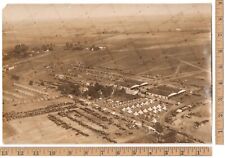
1923 Lambert-St Louis National Air Races PSA LOA/COA Original Photo & Provence $499.00
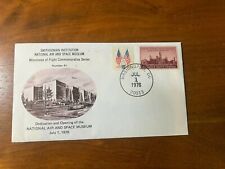
National Air & Space Musem First Day Opening July 1, 1976 $250.00
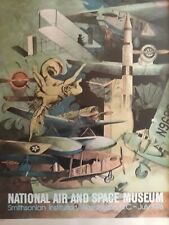
Rare Original National Air and Space Museum Poster, Signed & Numbered $790.00
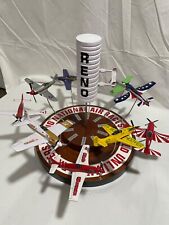
Reno National Air Racing Vintage set of unlimited class racers, 10 models $849.00
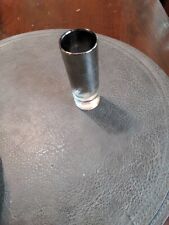
National Air and Space Museum Shot Glass 4" Smithsonian Institute $6.50
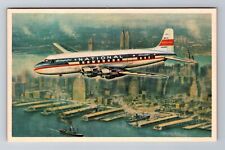
National Air Red Carpet Service, Plane, Transportation Souvenir Vintage Postcard $7.99
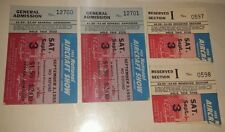
1955 National Air Show Philadelphia Full Ticket & Stub LOT OF 4 WITH 2 COMPLETE $88.20
|